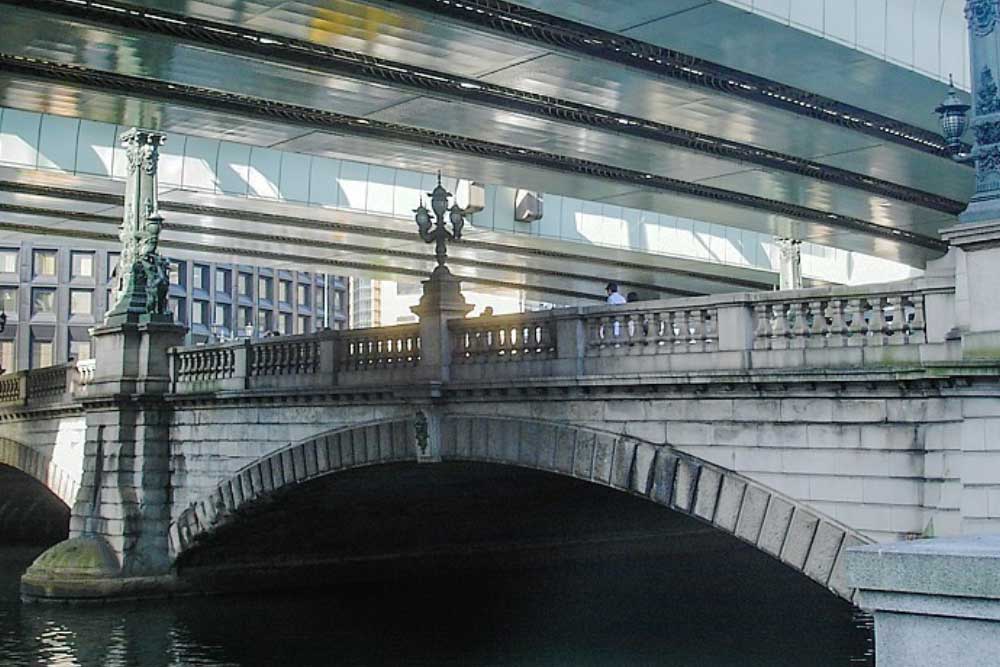Nihonbashi (日本橋, literally “Japan Bridge”) is a city district of Tokyo, north of Ginza and within walking distance of Tokyo Station. The bridge, after which the district is named, has been the kilometer zero marker for Japan’s national highway network since the early Edo Period.
Formerly a wooden bridge, the Nihonbashi was reconstructed in stone during the Meiji Period, and was covered by an expressway in the 1960s. You can cross a partial 1:1 replica of the original wooden bridge in the Edo-Tokyo Museum in Ryogoku, while a half sized replica of the bridge connects the fourth and fifth floors of the International Terminal at Haneda Airport.
As the “center of Japan”, the Nihonbashi district has enjoyed much commercial prosperity over the centuries, and the area has flourished with bustling shops lining the streets and shipping canals (most of which have been filled in in the meantime). Many shops with centuries-long histories are still operating in the district today and make for pleasant strolls. During the Edo Period (1600-1867), the Mitsui family, one of the most powerful merchant families, opened a highly successful textile shop, the Echigoya, in Nihonbashi. Its successor, the Mitsukoshi Nihonbashi, became Japan’s first department store and still stands in the district’s center.
Recent redevelopment projects have revitalized the Nihonbashi district with tasteful new additions. A highlight is the Coredo Muromachi complex with its three elegant skyscrapers that feature shopping and dining in a modern, yet traditional design inspired by the Edo Period heritage of the merchant district. Many of its shops specialize in traditional crafts or local foods from across Japan, such as lacquerware, gold leaf, knives, chopsticks, sake, condiments, seaweed and sweets.

